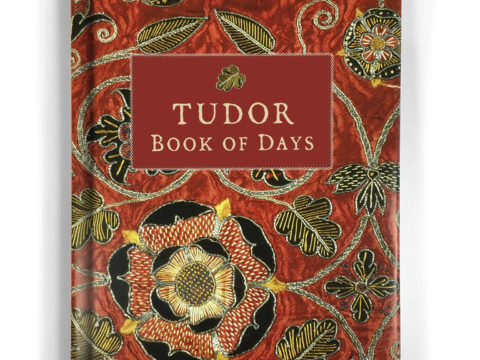Elizabeth of York: Life Story
Chapter 12 : Grief
Elizabeth and Henry continued to travel together, progressing to Coventry and Nottingham before returning to London for the reception of their new daughter-in-law. The Infanta Katharine arrived in England on 2nd October 1501. She travelled slowly from Plymouth, where she had been met by officials instructed by Elizabeth. Her Master of the Horse organised the litters and horses for the Princess’ journey.
Elizabeth also made arrangements for Katharine’s household officers and ladies, amongst who were Agnes Howard, née Tilney, Countess of Surrey, who was later to support her step-granddaughter, Anne Boleyn, over Katharine.
Katharine’s first meeting with her fiancé and future father-in-law took place at Dogmersfield in Hampshire, but she did not meet Elizabeth until the night before her wedding, when she was introduced to her mother-in-law at Baynard’s Castle. The Princess returned to Lambeth Palace, whilst Elizabeth went to Lord Bergavenny’s house, near St Paul’s, in preparation for the next day’s events. Lord Bergavenny was her second cousin, and also the husband of her maternal cousin, Lady Joan FitzAlan.
On 14th November 1501, Elizabeth, dressed in white satin and purple velvet, travelled to St Paul’s with Katharine. She and Henry then quietly entered the Cathedral to watch behind a screen as the ceremony took place. After the wedding, there was the usual feasting and dancing. Prince Henry and Princess Margaret shone as they danced, whilst Arthur, either less robust, or more dignified than his brother, sat with his new bride.
The rejoicings continued for weeks, until, just before Christmas, the bridal pair departed for the Marches. Elizabeth and the rest of the royal family went to Richmond for the festive season. The palace was now habitable again, after huge expenditure.
Arthur properly married, it was now Margaret’s turn. At the end of January 1502, the Treaty of Perpetual Peace between England and Scotland was confirmed at Richmond and on 25th, Margaret was formally married by proxy to King James. The religious aspects of the ceremony were carried out by Henry Deane, Archbishop of Canterbury, Thomas Savage, Archbishop of York, and Robert Blackadder, Bishop of Glasgow.
Elizabeth was attended by her sister, Katherine, Lady Courtenay, and also by Lady Katherine Warbeck (or Lady Katherine Huntly as she was called, from her father’s title). After Mass, the King and Queen, Prince Henry and Princess Mary and nearly one hundred others went to Elizabeth’s Great Chamber. Henry and Elizabeth sat in their chairs of state, with Prince Henry and Princess Mary on stools, whilst Princess Margaret stood in front of them.
Margaret confirmed her willingness to marry, if such was her father and mother’s will. They affirmed that it was, and gave her their blessing. The proxy marriage took place, and Margaret became Queen of Scots. To show her new rank, she now took precedence of everyone except her parents – apparently to Prince Henry’s annoyance. Elizabeth and Margaret shared a single ‘mess’ at dinner – a mark of Margaret’s new status.
For the next two months, Elizabeth was busy planning for Margaret’s departure, which was scheduled to take place when she reached the age of fourteen, although she must have been deeply disturbed by the discovery that her cousin, Edmund de la Pole, and her brother-in-law, William Courtenay, were plotting rebellion.
Both were taken to the Tower. Elizabeth did all she could for her sister, bringing her into her household and paying for the maintenance of her children.
Worse was to follow. On 4th April shocking news reached the Privy Council. The King’s confessor, an Observant Friar, was summoned, and informed that Prince Arthur was dead. The friar went to the King, and requested to be left alone with him to break the devastating news. Henry sent for Elizabeth, so that she could hear the terrible tidings from him.
Elizabeth, seeing her husband distraught, comforted him as best she could. She reminded him that he had been an only child, but that God had kept him safe, and that he still had a son and two daughters. She also assured him that they could yet have more children. The fact that she conceived before the end of May suggests that they had refrained from marital relations for some time.
The Queen then returned to her own rooms, but, despite her consoling words to Henry, immediately collapsed into her own grief. Henry, hearing of the state she was in, came to her and comforted her in his turn.
The court was plunged into deep mourning. Elizabeth and her daughters were dressed in deepest black. Arthur was buried in Worcester Abbey – probably because he was considered to have died of something contagious (although he may have had an underlying illness, perhaps tuberculosis). Katharine, who had also been ill, travelled to London in a litter which Elizabeth sent for her.
Elizabeth of York
Family Tree


